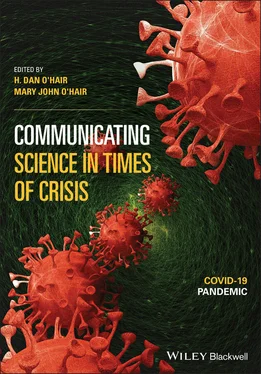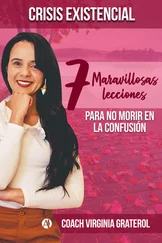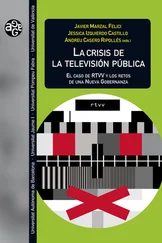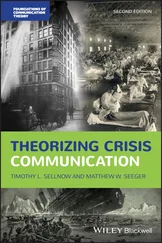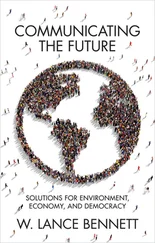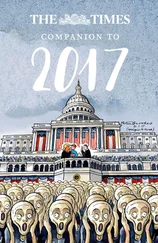196 Swami, V., Furnham, A., Smyth, N., Weis, L., Lay, A., & Clow, A. (2016, September). Putting the stress on conspiracy theories: Examining associations between psychological stress, anxiety, and belief in conspiracy theories. Personality and Individual Differences, 99, 72–76. https://doi.org/10.1016/j.paid.2016.04.084
197 Talwar, S., Dhir, A., Kaur, P., Zafar, N., & Alrasheedy, M. (2019, November). Why do people share fake news? Associations between the dark side of social media use and fake news sharing behavior. Journal of Retailing & Consumer Services, 51, 72–82. https://doi.org/10.1016/j.jretconser.2019.05.026
198 Tandoc, E. C., Jr., Lim, Z. W., & Ling, R. (2017). Defining “fake news”: A typology of scholarly definitions. Digital Journalism, 6(2), 1–17. https://doi.org/10.1080/21670811.2017.1360143
199 Törnberg, P. (2018). Echo chambers and viral misinformation: Modeling fake news as complex contagion. PLoS ONE, 13(9), 1–21. https://doi.org/10.1371/journal.pone.0203958
200 Torres, R., Gerhart, N. & Negahban, A. (2018, January). Combating fake news: An investigation of information verification behaviors on social networking sites. Proceedings of the 51st Hawaii International Conference on System Sciences, 3976–3985. http://hdl.handle.net/10125/50387
201 Tucker, J. A., Guess, A., Barberá, P., Vaccari, C., Siegel, A., Sanovich, S., Stukal, D., & Nyhan, B. (2018, March). Social media, political polarization, and political disinformation: A review of the scientific literature. William + Flora Hewlett Foundation. https://www.hewlett.org/wp-content/uploads/2018/03/Social-Media-Political-Polarization-and-Political-Disinformation-Literature-Review.pdf
202 Twenge, J., & Spitzberg, B. H. (2020). Declines in non-digital social interaction among Americans, 2003–2017. Journal of Applied Social Psychology, 6(1), 329–345. https://doi.org/10.1111/jasp.12665
203 Twenge, J., Spitzberg, B. H., & Campbell, W. K. (2019). Less in-person social interaction with peers among U.S. adolescents in the 21st century and links to loneliness. Journal of Social and Personal Relationships, 36(6), 1892–1913. https://doi.org/10.1177/0265407519836170
204 Twenge, J. M., Martin, G., & Spitzberg, B. H. (2019). Trends in U.S. adolescents’ media use, 1976–2015: The rise of the Internet, the decline of TV, and the (near) demise of print. Psychology of Popular Media Culture, 8(4), 329–345. https://doi.org/10.1037/ppm0000203
205 UNESCO. (2018). Journalism, ‘fake news’ & disinformation. United Nations Educational, Scientific and Cultural Organization. https://en.unesco.org/fightfakenews
206 Uscinski, J. E. (2018). The study of conspiracy theories. Argumenta, 3(2), 233–245. https://doi.org/10.23811/53.arg2017.usc
207 Uscinski, J. E., Enders, A. M., Klofstad, C., Seelig, M., Funchion, J., Everett, C., Wuchty, S., Premaratne, K., & Murthi, M. (2020, April 28). Why do people believe COVID-19 conspiracy theories? The Harvard Kennedy School, Misinformation Review, 1. https://doi.org/10.37016/mr-2020-015
208 Van Heekeren, M. (2020). The curative effect of social media on fake news: A historical re-evaluation. Journalism Studies, 21(3), 306–318. https://doi.org/10.1080/1461670X.2019.1642136
209 van Prooijen, J. (2016). Sometimes inclusion breeds suspicion: Self‐uncertainty and belongingness predict belief in conspiracy theories. European Journal of Social Psychology, 46(3), 267–279. https://doi.org/10.1002/ejsp.2157
210 van Prooijen, J. (2017). Why education predicts decreased belief in conspiracy theories. Applied Cognitive Psychology, 31(1), 50–58. https://doi.org/10.1002/acp.3301
211 van Prooijen, J., & Acker, M. (2015). The influence of control on belief in conspiracy theories: Conceptual and applied extensions. Applied Cognitive Psychology, 29(5), 753–761. https://doi.org/10.1002/acp.3161
212 van Prooijen, J.-W., & Douglas, K. M. (2018). Belief in conspiracy theories: Basic principles of an emerging research domain. European Journal of Social Psychology, 48(7), 897–908. https://doi.org/10.1002/ejsp.2530
213 Vosoughi, S., Roy, D., & Aral, S. (2018). The spread of true and false news online. Science (New York, N.Y.), 359(6380), 1146–1151. https://doi.org/10.1126/science.aap9559
214 Vraga, E. K., & Bode, L. (2020). Defining misinformation and understanding its bounded nature: Using expertise and evidence for describing misinformation. Political Communication, 37(1), 136–144. https://doi.org/10.1080/10584609.2020.1716500
215 Walczyk, J. J., Harris, L. L., Duck, T. K., & Mulay, D. (2014, August). A social-cognitive framework for understanding serious lies: Activation-decision-construction-action theory. New Ideas in Psychology, 34, 22–36. https://doi.org/10.1016/j.newideapsych.2014.03.001
216 Waldrop, M. M. (2017). The genuine problem of fake news: Intentionally deceptive news has co-opted social media to go viral and influence millions. Science and technology can suggest why and how. But can they offer solutions? Proceedings of the National Academy of Sciences of the United States of America, 114(48), 12631–12634. https://doi.org/10.1073/pnas.1719005114
217 Wang, R., He, Y., Xu, J., & Zhang, H. (2020). Fake news or bad news? Toward an emotion-driven cognitive dissonance model of misinformation diffusion. Asian Journal of Communication, 30(5), 317–342. https://doi.org/10.1080/01292986.2020.1811737
218 Ward, C., & Voas, D. (2011). The emergence of conspirituality. Journal of Contemporary Religion, 26(1), 103–121. https://doi.org/10.1080/13537903.2011.539846
219 Wardle, C., & Derakhshan, H. (2018). In Journalism, ‘fake news’ and disinformation (Handbook for journalism education and training). UNESCO. https://bit.ly/2MuELY5
220 Weiss, A. P., Alwan, A., Garcia, E. P., & Garcia, J. (2020). Surveying fake news: Assessing university faculty’s fragmented definition of fake news and its impact on teaching critical thinking. International Journal of Educational Integrity, 16(1), 1–30. https://doi.org/10.1007/s40979-019-0049-x
221 Wood, M. J. (2017). Conspiracy suspicions as a proxy for beliefs in conspiracy theories: Implications for theory and measurement. British Journal of Psychology, 108(3), 507–527. https://doi.org/10.1111/bjop.12231
222 Wood, M. J., & Douglas, K. M. (2015, June). Online communication as a window to conspiracist worldviews. Frontiers in Psychology, 6. https://doi.org/10.3389%2Ffpsyg.2015.00836
223 Xia, Y., Lukito, J., Zhang, Y., Wells, C., Kim, S. J., & Tong, C. (2019). Disinformation, performed: Self-presentation of a Russian IRA account on Twitter. Information, Communication & Society, 22(11), 1646–1664. https://doi.org/10.1080/1369118X.2019.1621921
224 Xian, J., Yang, D., Pan, L., Wang, W., & Wang, Z. (2019). Misinformation spreading on correlated multiplex networks. Chaos, 29(11), 113123–1–10. https://doi.org/10.1063/1.5121394
225 Xiao, B., & Benbasat, I. (2011). Product-related deception in e-commerce: A theoretical perspective. MIS Quarterly, 35(1), 169–196. https://doi.org/10.2307/23043494
226 Zannettou, S., Caulfield, T., Blackburn, J., De Cristofaro, E., Sirivianos, M., Sringhini, G., & Suarez-Tangil, G. (2018). On the origins of memes by means of fringe web communities. Proceedings of the Internet Measurement Conference 2018, 188–202. https://doi.org/10.1145/3278532.3278550
227 Zimmer, F., Scheibe, K., Stock, M., & Stock, W. G. (2019). Fake news in social media: Bad algorithms or biased users? Journal of Information Science Theory & Practice (JISTaP), 7(2), 40–53. https://doi.org/10.1633/JISTaP.2019.7.2.4
228 Zollo, F. (2019). Dealing with digital misinformation: A polarised context of narratives and tribes. EFSA Journal, 17(S1), 1–15. https://doi.org/10.2903/j.efsa.2019.e170720
229 Zollo, F., Novak, P. K., Del Vicario, M., Bessi, A., Mozetič, I., Scala, A., Caldarelli, G., & Quattrociocchi, W. (2015). Emotional dynamics in the age of misinformation. PLoS ONE, 10(10), 1–22. https://doi.org/10.1371/journal.pone.0138740
Читать дальше
